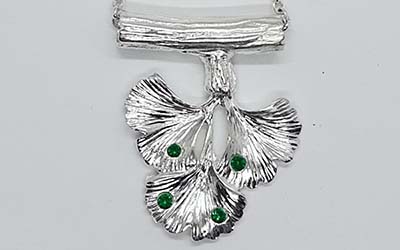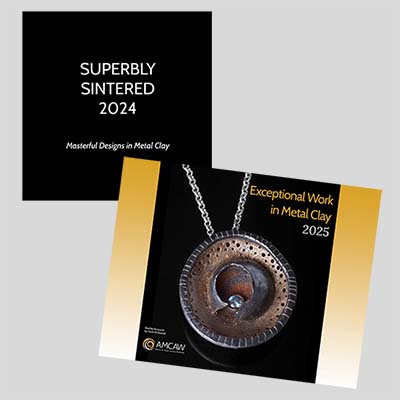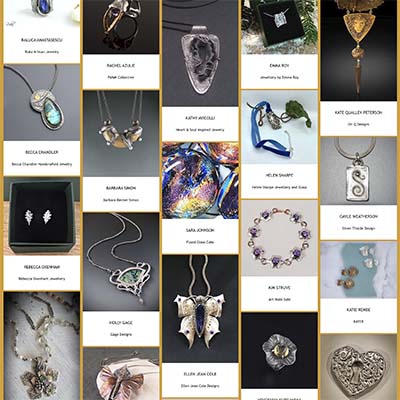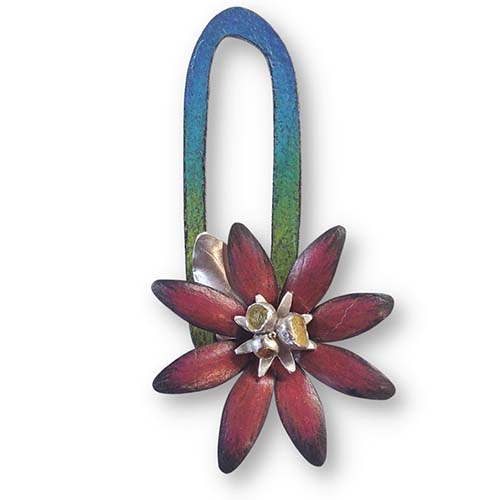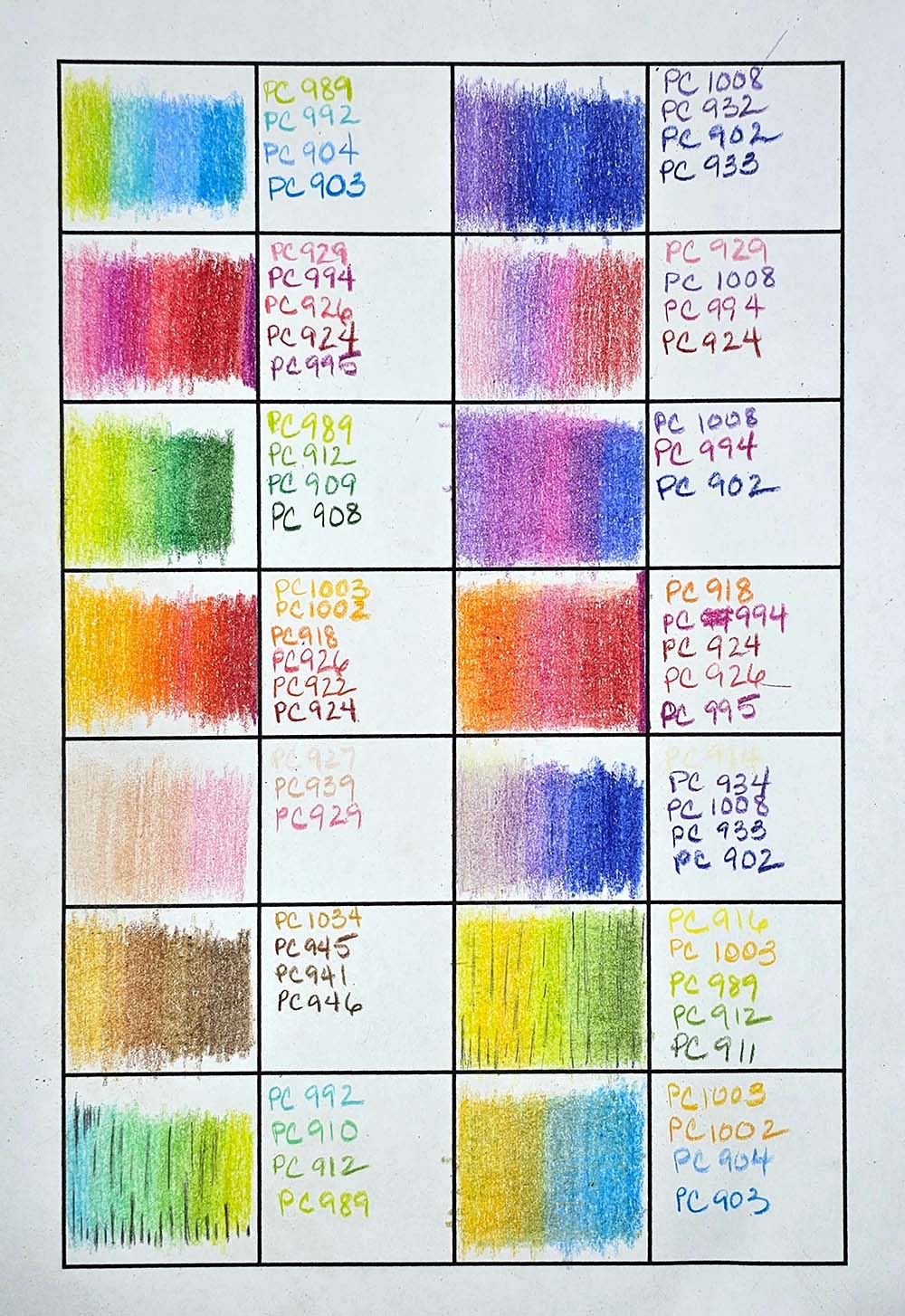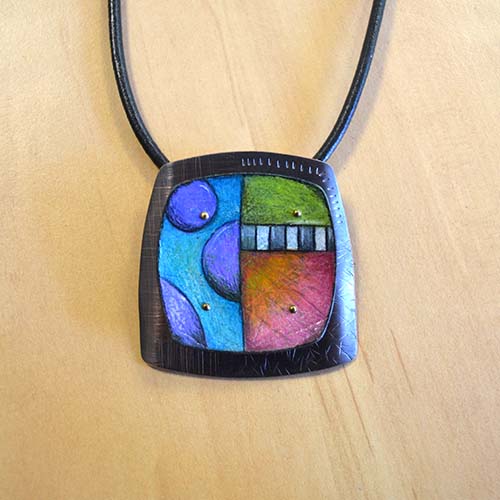Application Techniques
The application techniques are only limited by your imagination. The colored pencils, pigments, can be applied simply in a single layer of color or in some variation of the layer and burnish technique, commonly used with colored pencils on paper, which also works great on metal clay. Once the metal has been prepared, the color can be applied to textured metal, stenciled or stamped designs, as well as freehanded. The application process to create the illusion of depth and luminosity can include several layers of pigment separated by an acrylic fixative that creates a new foundation to begin the next layer of color.
One of the beautiful effects of using colored pencil is the fluid transition of color, which can be achieved simply by layering one color on top of another and blending with a colorless blending pencil or applying low heat to soften the wax into a melted homogenous hue. Some artists prefer to use odorless mineral spirits or isopropyl alcohol with a brush to blend the layered pigments.
Once the color application has been completed, the color is preserved with a clear spray acrylic sealant. Research on this reveals that ProtectaClear or Everbrite are widely popular, but various other options are available.


